Pebble's place in an Android Wear world
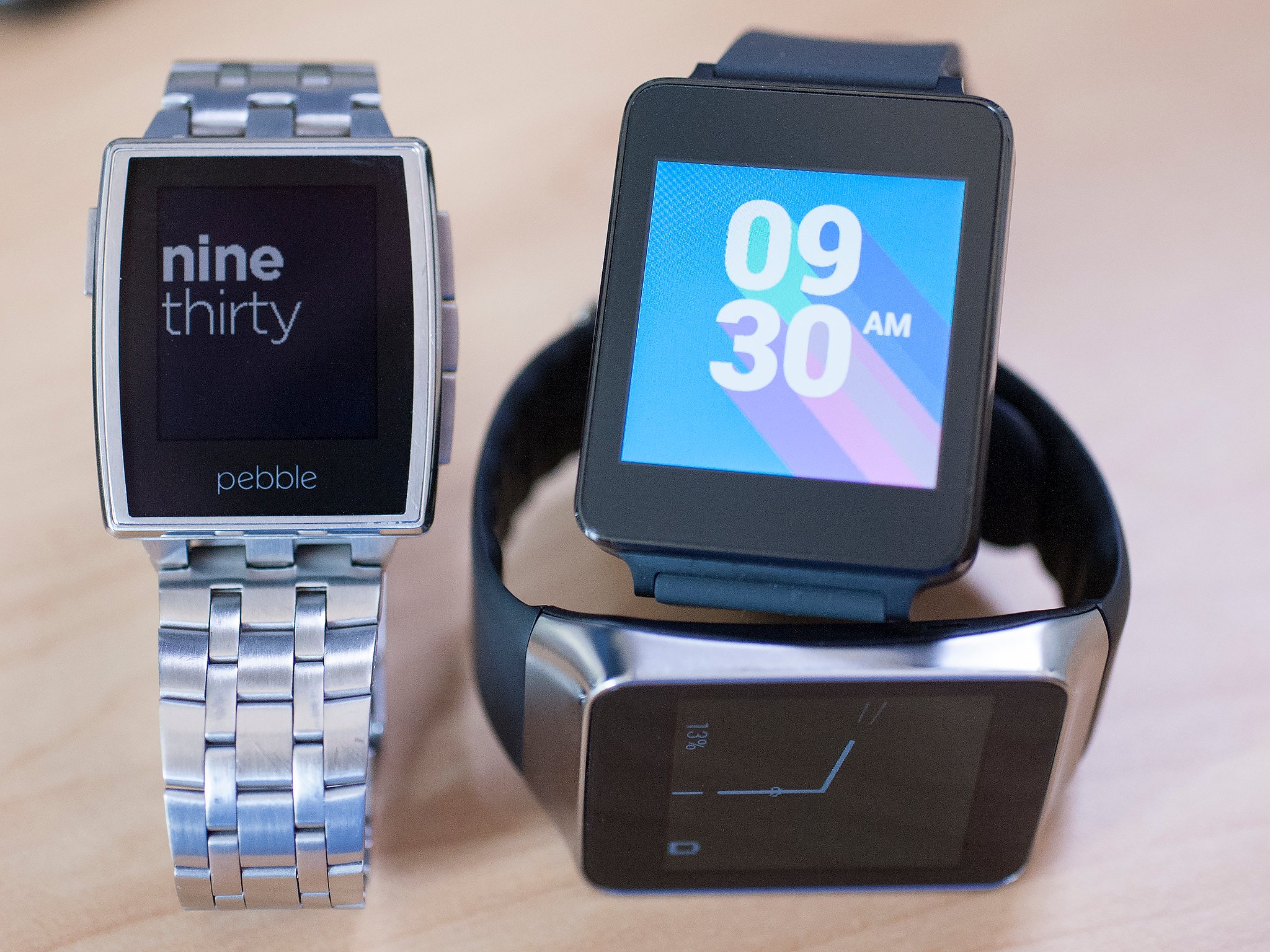
Does a monochrome, non-Android smartwatch even have a chance anymore? We argue that Pebble indeed does.
Android Wear is the new hotness. Of that there is no doubt. Mini smartphones on our wrists, basically, running fully baked versions of Android, with a specialized user interface better suited for wearables. This is the future.
But it wasn't that long ago that we were singing the praises of Pebble, the Kickstarter darling that raised $10 million, survived the long road to release and was actually one of the larger stories at CES this past January with the release of Pebble Steel, its metal second-generation watch that gave the smartwatch a much more sophisticated look.
But we all know how quickly the seas can change in the tech industry, and today the winds blow for Android Wear.
So is there still a place for Pebble in the new Android Wear world? We think you can make a strong case for it.
Read more: Wrist First: This is Pebble
1. E-Paper display wins outdoors
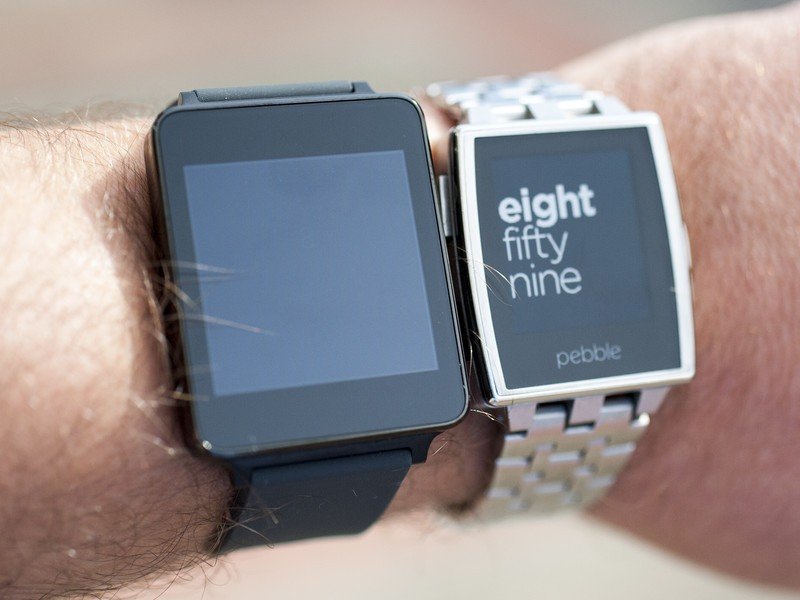
There's a harsh reality in the harsh summer sun — the current crop of Android Wear watches are damned near useless in direct sunlight. LCD in the G Watch or AMOLED in the Gear Live, it doesn't much matter. Both go all vampire during daylight — you just won't see them.
Be an expert in 5 minutes
Get the latest news from Android Central, your trusted companion in the world of Android
The monochrome mode the watches switch to for battery conservation doesn't really help with this, and that's too bad. But the entire point of a watch — never mind a smartwatch — is that you're supposed to able to see information at a glance. If you can't see that information, it's game over. Period.
2. Simplicity has its place
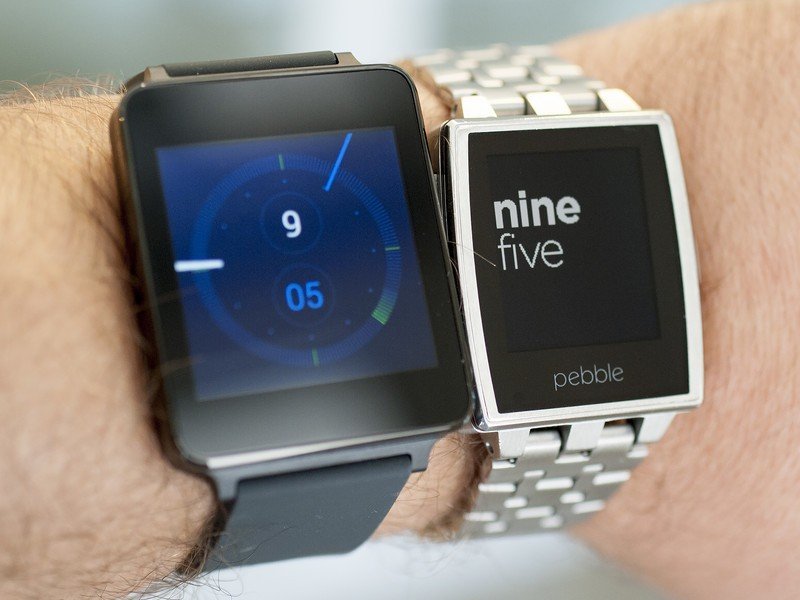
Color displays are great, but it's easy to go too far.
Having a fully formed build of Android on your wrist is a truly awesome thing. Let us not be accused of ignoring that fact. It opens doors for developers, which in turn opens doors for those wearing the watches. And Android Wear is very much still in its infancy. It can and will change and adapt to the way we need it to look and work. But as it stands right now, it's not too difficult to accuse Android Wear of perhaps trying to do a little too much. You can pick any number of ways in which form might trump function. That's not to say that good design doesn't have its place, and the new Material Design language should help with that. But swiping and color may prove to be a bit much for some.
There's a fine line between an easy-to-use smartwatch and an overcomplicated gadget that gets in its own way. And that line is a moving target. For some, Pebble will be easier on the brain. The physical buttons allow for muscle memory and a sort of unconscious use that you can't do with touchscreens. Capacitive touch displays and need more of your attention.
3. Five days' battery life is better than one, or even two
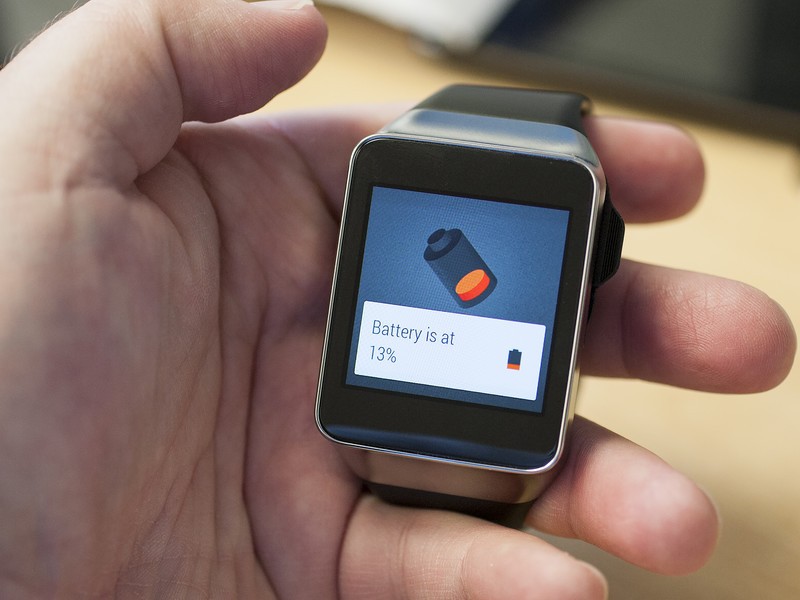
We're currently only getting about a day's use — and we're not always talking a full 24 hours — out of the G Watch or Gear Live. (A pre-release software update might have stretched things a little, or it might be placebo. We'll see.) Pebble and Pebble Steel at least triple that, and stretching things to five days isn't out of the question.
And neither the Pebbles nor the Android Wear watches use a standard charger — each has a proprietary system. You have to have the right charger with you. If not, you won't be topping off when you have a few free minutes.
4. More stylish out of the box
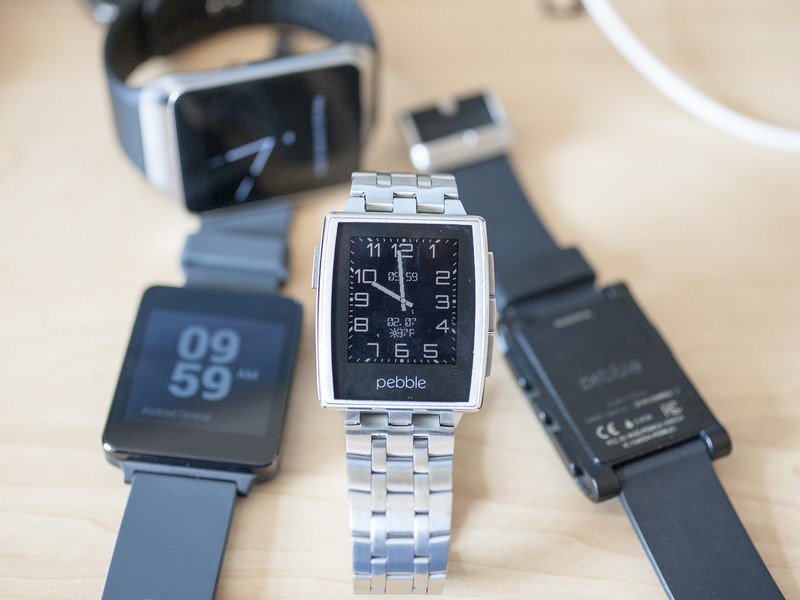
Rubber straps have no place on a sophisticated smartwatch.
This one's a bit subjective, but we'll stand by it. Pebble Steel looks better out of the box than the LG G Watch or (to a lesser extent, perhaps) the Samsung Gear Live. Some of that has to do with the watch face itself. Steel is cooler than plastic. Pebble Steel has a more industrial look to it, at least putting it somewhere in the ballpark of more traditional timepieces.
And a lot of it has to do with the included straps. We don't yet know what Moto 360 will ship with, but we've seen it with leather and steel links. Pebble Steel ships with both of those if you get it directly from Pebble. Either option looks better than the rubber straps that come with the G Watch and Gear Live. Of this there should be no argument.
You can change the straps on the G Watch and Gear Live, sure. And that's an option you certainly should consider.
5. Cross-platform is a good thing
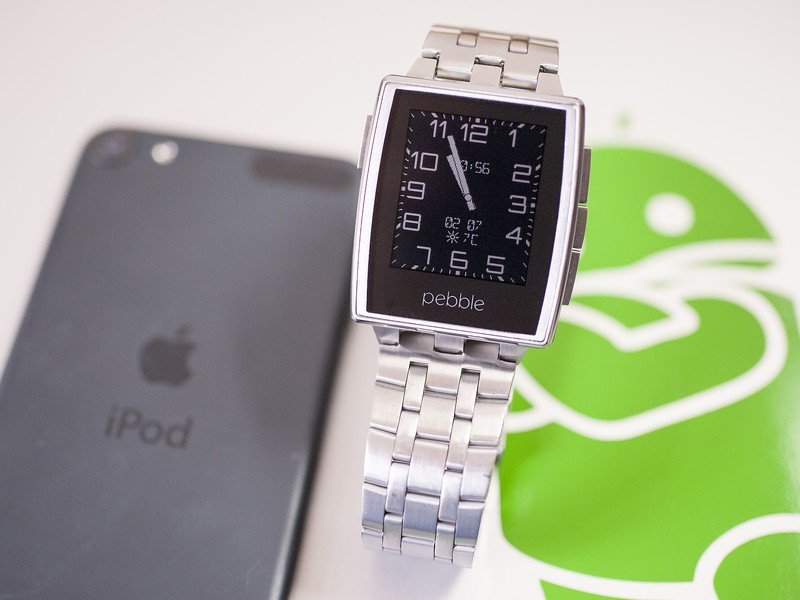
Pebble works with Android and iOS. (And BlackBerry, too, if you're feeling saucy.)
Android Wear is Android-only, of course. Cross-platform for accessories is a good thing. Will Google bring Android Wear to iOS as it's done with many of its mobile apps? We'll have to see. We don't blame Google for launching on Android. But we'd love to see what might happen if it was paired alongside an Apple device.
6. Navigation actually is easier on Pebble
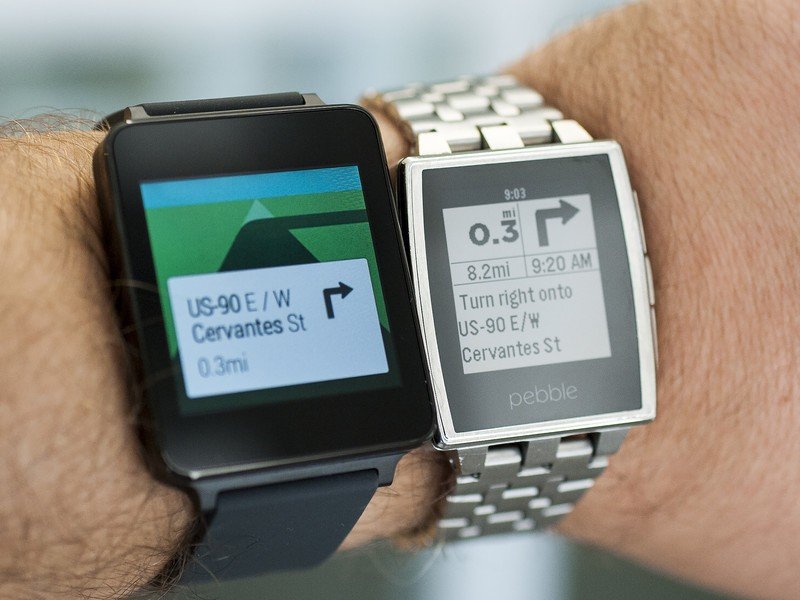
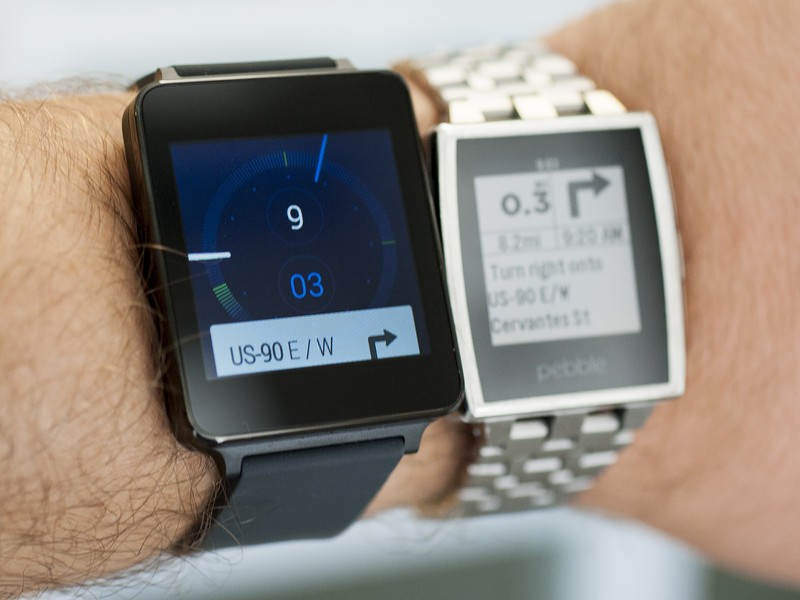
For as good as Google Maps is, it's only as good as the display it's on. And for that reason, navigation through a third-party app using Google Maps actually is better on Pebble than it is Android Wear. If you have to fight to see where the next turn is, if it takes more than a single glance, then it's not working. Android Wear still has some room to improve in that department.
First there's the sun factor. If you can't see what's on the screen, nothing else matters. Then there's the simple ease of use. Using Nav Me with Pebble (again, a third-party app) you get less design but easier-to-digest information — especially because Android Wear tends to kick back over to the minimized card pretty quickly.
(We'd also increase the vibration at each waypoint.)
7. Retail availability should not be downplayed
That you can buy a Pebble or Pebble Steel in a retail store is a big deal. (In the U.S., Target and Best Buy are among the two largest, and AT&T stores carry it as well.) LG announced intentions for the G Watch to be in retail stores in 27 markets, including Australia, Brazil, Mexico, New Zealand, Singapore and Russia. The Gear Live will be available in Samsung retail stores. (Not quite the same thing, but better than nothing.)
Again, there's plenty of time for Android Wear to go the brick-and-mortar route, and it absolutely must do so, especially if and when Apple brings a wearable to the table. But for now, Pebble wins that round, too.
Don't sound the death knell just yet
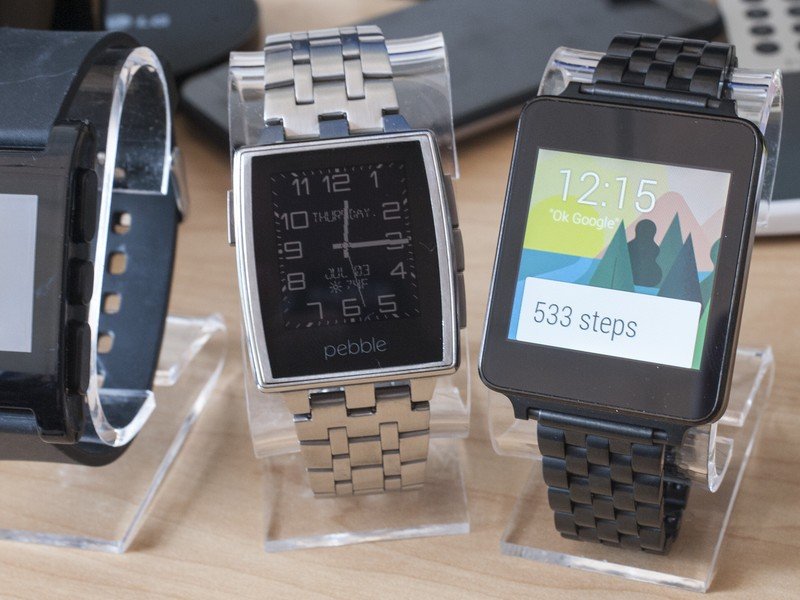
The smartwatch space isn't yet owned by anyone. That's in part because smartwatches are still niche, nerdy products, a result as much because of their physical design as the software running on them. For as well as Pebble's done, you'll be hard pressed to see them in public in any real numbers.
And Android Wear is a baby. The first two specimens — the LG G Watch and Samsung Gear Live — are, for all intents and purposes, the generic black slab of smartwatches. Maybe the circular Moto 360 will change that. Maybe it won't. Time will tell.
For now, Pebble is still very much a viable product. And it's a stylish, viable product if you go with Pebble Steel. But there's definitely a new player in town, and Pebble's going to have to up its game if it wants to continue to compete.

